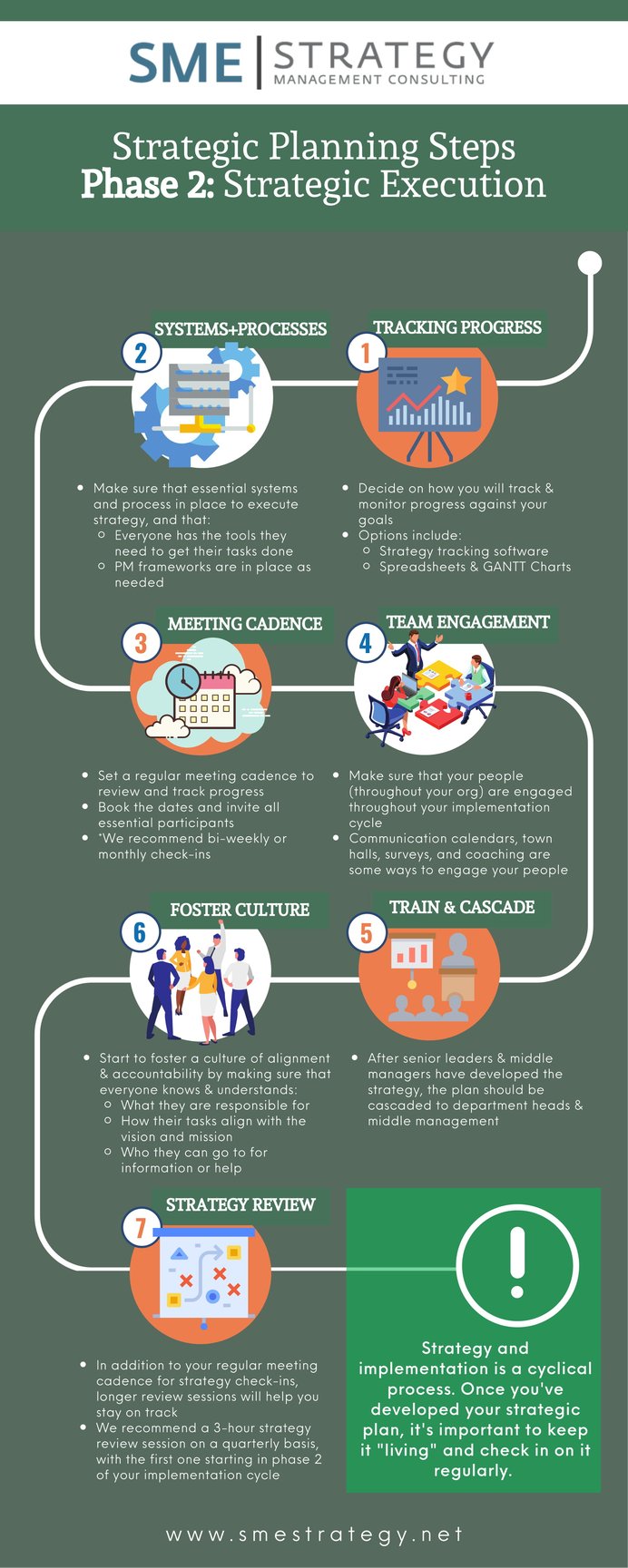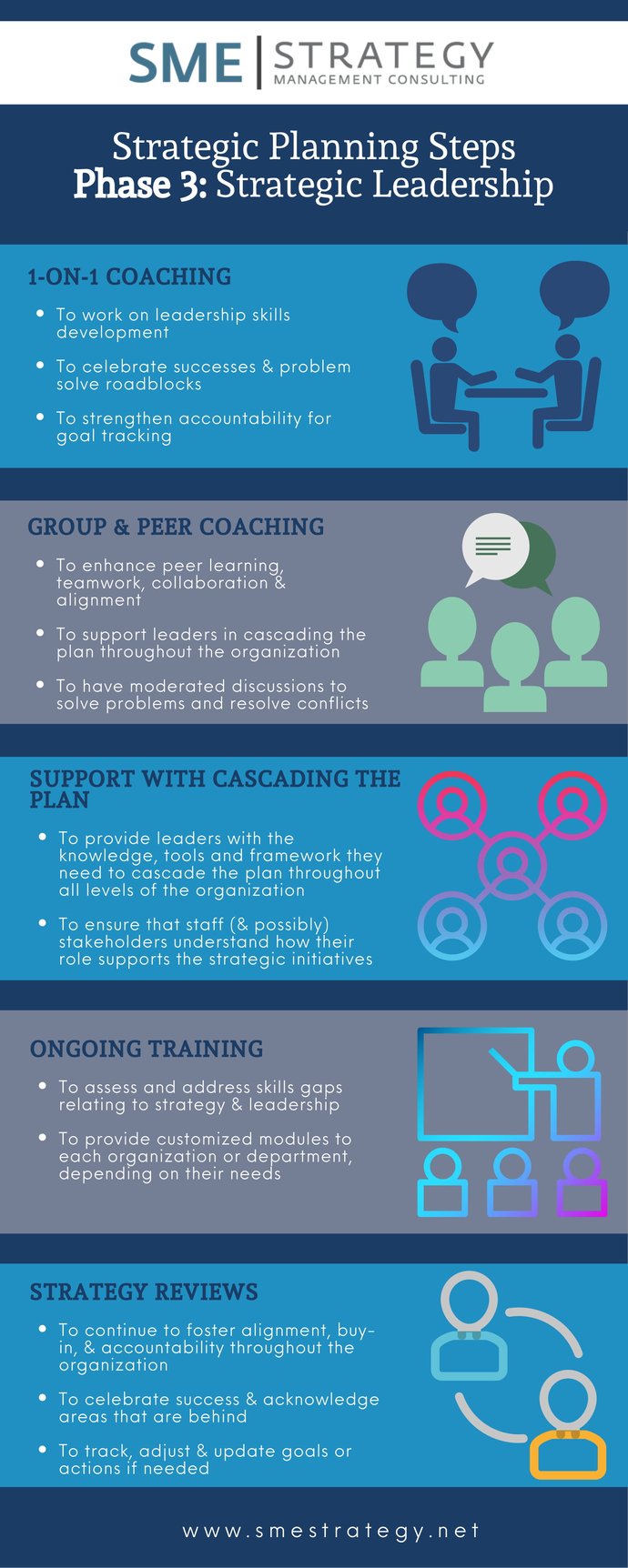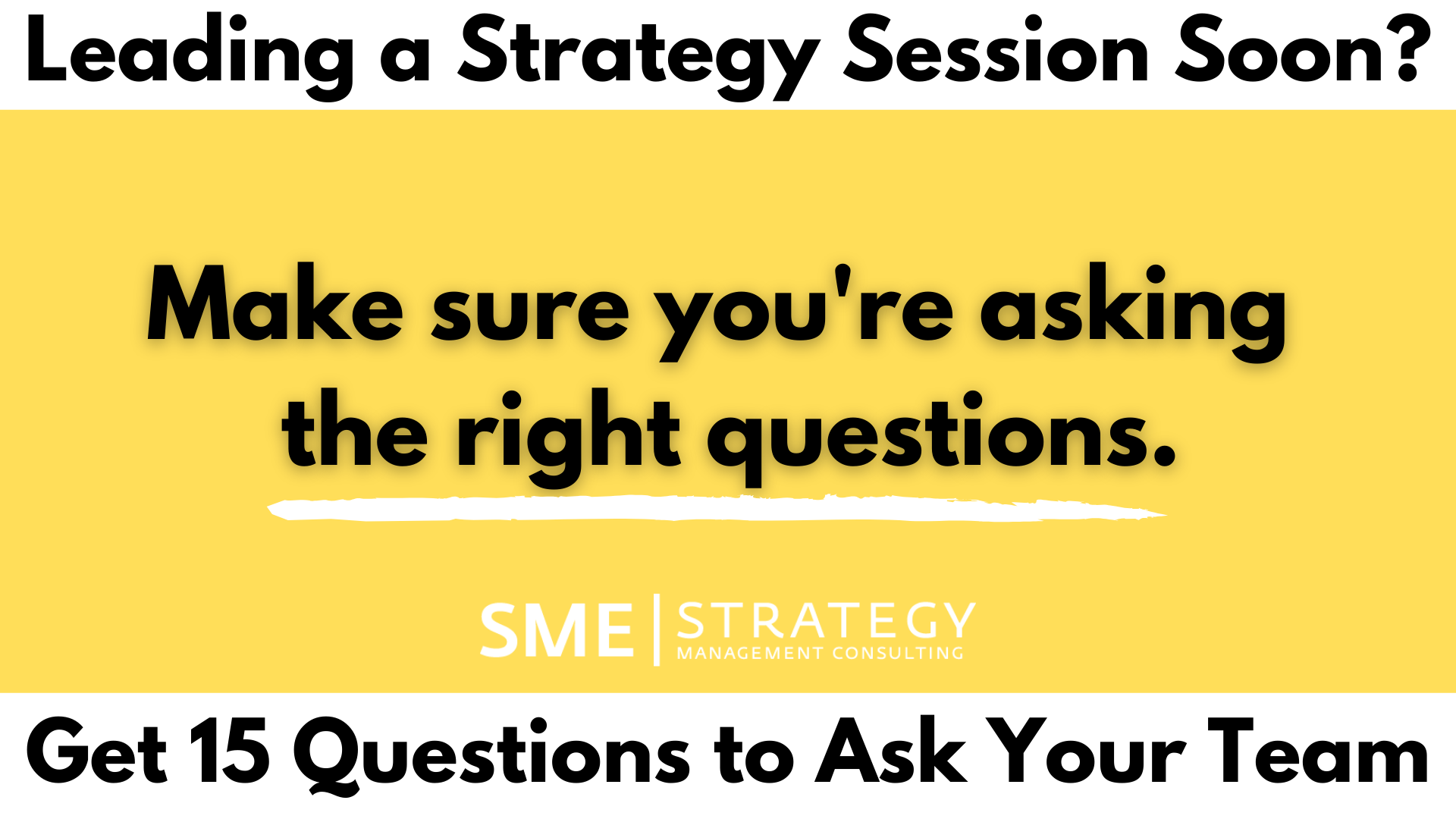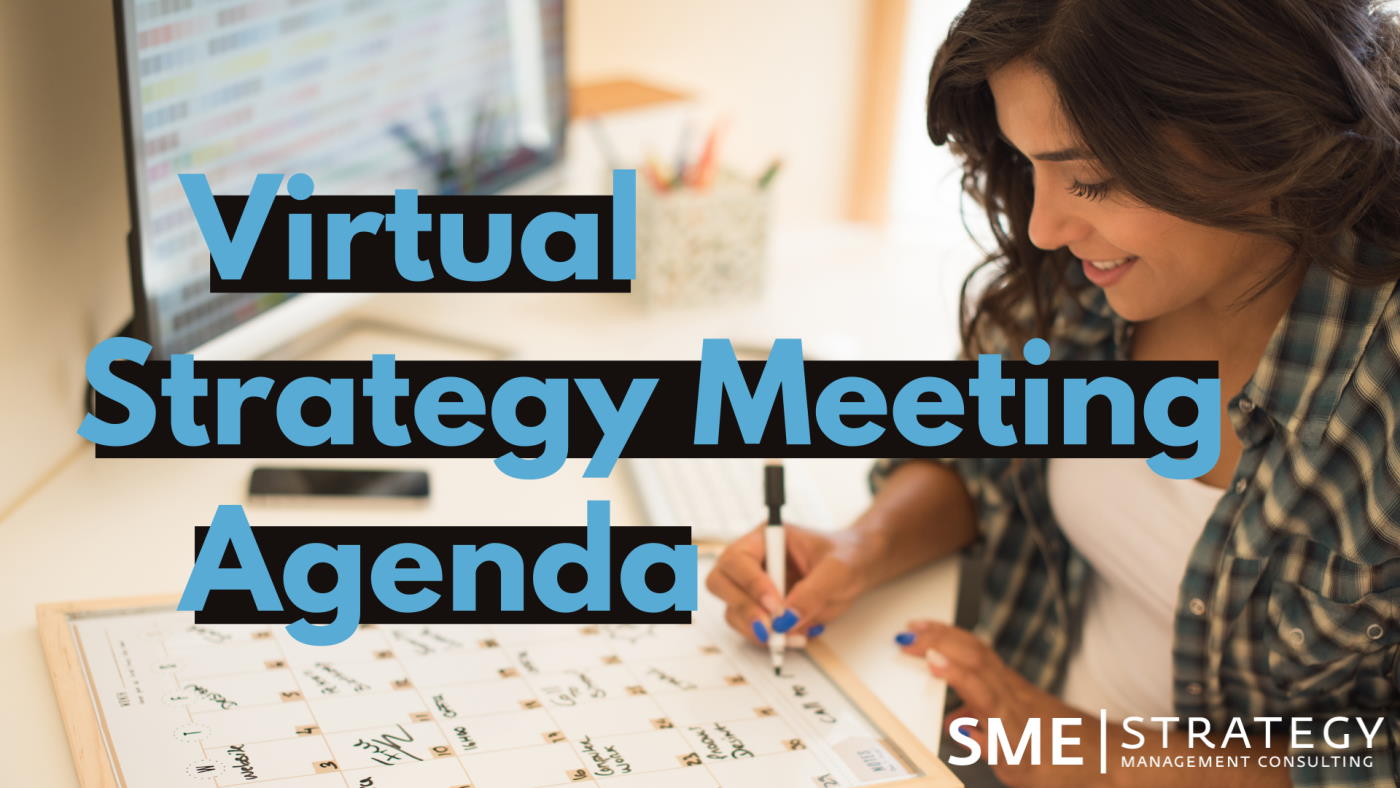
SME Strategy is a strategy consulting firm that specializes in helping organizations align their teams and operations around a shared vision, mission, values, goals, and action plans. Our strategic planning services offer guidance on how a strategic planning facilitator can provide support in constructing an effective strategic plan that ensures your strategy is communicated and implemented across your entire organization.
With more and more office work moving to the virtual realm, strategic planning is as important as ever (if not more so). If done right, virtual strategic planning can be as valuable, collaborative and engaging as in-person sessions.
Our team has facilitated hundreds of strategic planning sessions for organizations large and small, both in person and online. We've developed processes like strategy meeting agendas to help make sure the entire process is focused and that organizations are set up for successful implementation.
If your organization is planning a virtual strategy meeting, this agenda will help you stay on track and make sure that your team is aligned every step of the way.
*If your organization is hosting an in-person strategic planning session, check out our 2-Day Sample Strategic Planning Agenda.
We use this agenda as a guideline for our virtual strategy facilitations, however, it can be customized to each organization’s needs.
For example:
- While we recommend holding virtual sessions one week apart to allow for information digestion and homework time, you may wish to hold the sessions closer together or further apart, depending on your organizational needs
- While we recommend 3-hour sessions because it’s long enough to dive into the deep work, and short enough to hold attention spans, you may wish to have shorter or longer sessions, depending on scheduling needs for your team (ex: 6x 2.5hr sessions, or 4x 4hr sessions)
Pre-work
Pre-work serves two purposes: one, to make sure that your people are prepared for the upcoming strategic planning sessions so that you can make the most of your time, and two, to help align and engage participants (and stakeholders) early on in the planning process.
Recommended Pre-Work Agenda & Timeline:
|
Timing |
Item |
Purpose/Outcome |
|
4-6 weeks before the sessions |
Booking & Onboarding:
|
|
|
2-3 weeks before the sessions |
Session Preparation & Interviews:
|
|
|
1-3 weeks before the sessions |
OPTIONAL: Stakeholder Engagement
|
|
Need help with your strategic planning process? A facilitator can help: 
Virtual Strategy Meeting Agenda & Timeline
While the first phase of in-person strategy facilitation is usually completed in two 8-hr working days, we recommend splitting this up online to optimize engagement and to reduce screen fatigue. We recommend holding 5 x 3hr sessions, roughly one week apart.
This allows enough time to take a deep dive into the work each session, with space for creative thinking, reflection and any homework between each session.
|
Session & Timing |
Topics |
Session Outcomes |
|
Session 1 3 HOURS |
Where are we now?
|
|
|
Session 2 3 HOURS |
Where are we going? |
|
|
Session 3 3 HOURS |
What is going to get in our way?
|
|
|
Session 4 3 HOURS |
What do we need to do?
|
|
|
Session 5 3 HOURS |
What’s next?
|
|
|
1-2 weeks after sessions |
OPTIONAL: Stakeholder Engagement:
|
|
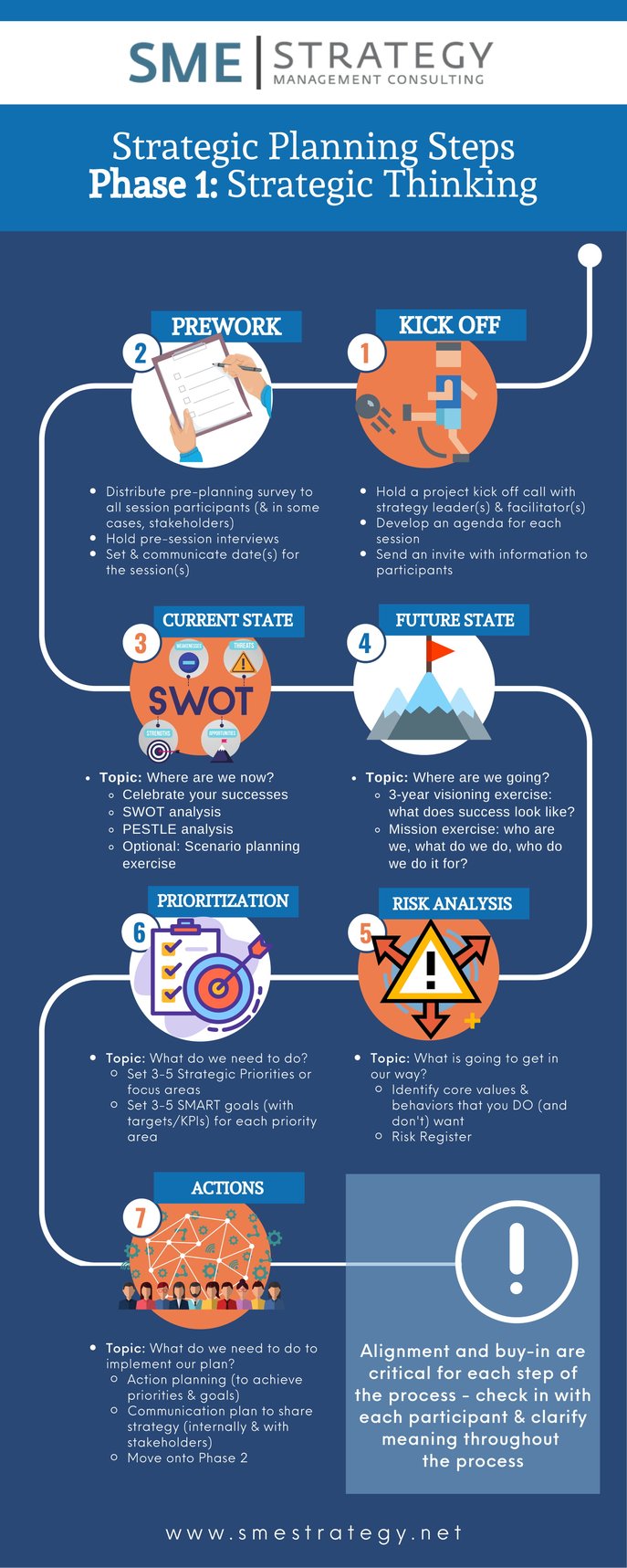
Post-work
Once you’ve completed your virtual strategy sessions, the planning work is not over. It’s important to make sure that prior to starting phase 2 (your implementation cycle) that you’ve:
- Solidified your priorities and defined SMART goals
- Documented your plan in a digestible way (ex:. a PPT presentation or PDF)
- Developed a communication plan to share and cascade your strategy throughout your organization
- Booked a time with your strategy leadership team to create your implementation plan (See our infographics of Phases 2 & 3 of the strategic planning process)
We can help you align your team around a clear vision, mission, values, goals and action plans,
so you can lead your organization more effectively and get better results.
Tools & Resources to Enhance Participation & Engagement
In addition to our agenda, we utilize several tools and resources to help enhance participation and engagement within virtual strategy meetings.
While there are abundant options to consider, some of our favorites include:
- Zoom – This is a great platform to host strategy meetings as it allows the facilitator to see multiple participants at once in a grid view, to share their screen, utilize breakout rooms for small group discussions, to incorporate polling, text chat, and other functionalities
- Liberating Structures – These are techniques and activities to help boost engagement and inclusion within group meetings and are considered a best practice within adult learning
- Mentimeter – This platform allows meeting hosts to poll participants, generate group word clouds, and obtain real-time data from multiple participants at once
- PPT Presentations – It’s a good practice for the strategy facilitator to have a PPT slide deck to help guide the discussions and to provide visual feedback to participants via screen sharing. This will allow participants to both see and hear any key instructions for activities throughout the session
Phases 2 & 3 of Strategic Planning
As mentioned above, strategic planning is cyclical. An optimal strategic plan is living and is not a document that sits on a shelf (or a file that lives on your desktop) to be revisited only once a year.
While the strategic planning cycle contains meetings and documentation, it’s equally important to incorporate systems and processes that will help your organization develop and maintain a culture that will successfully implement your strategic plan.
Phases 2 & 3 of the planning cycle will help your organization cascade your strategy throughout your organization; align your entire organization towards one future destination; track, monitor & revise your plan; and build your leadership capacity.
